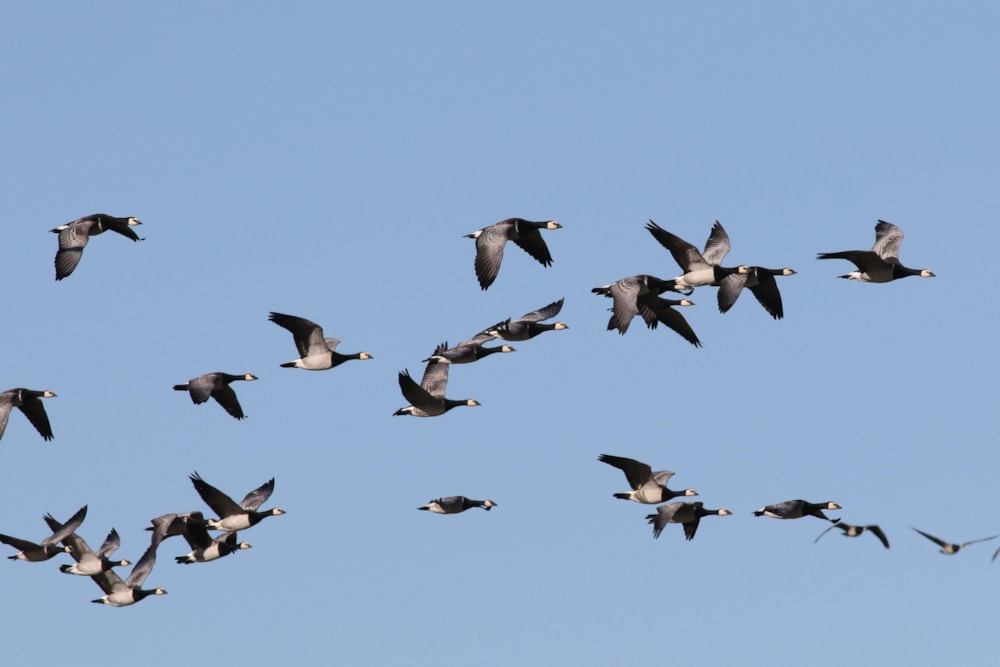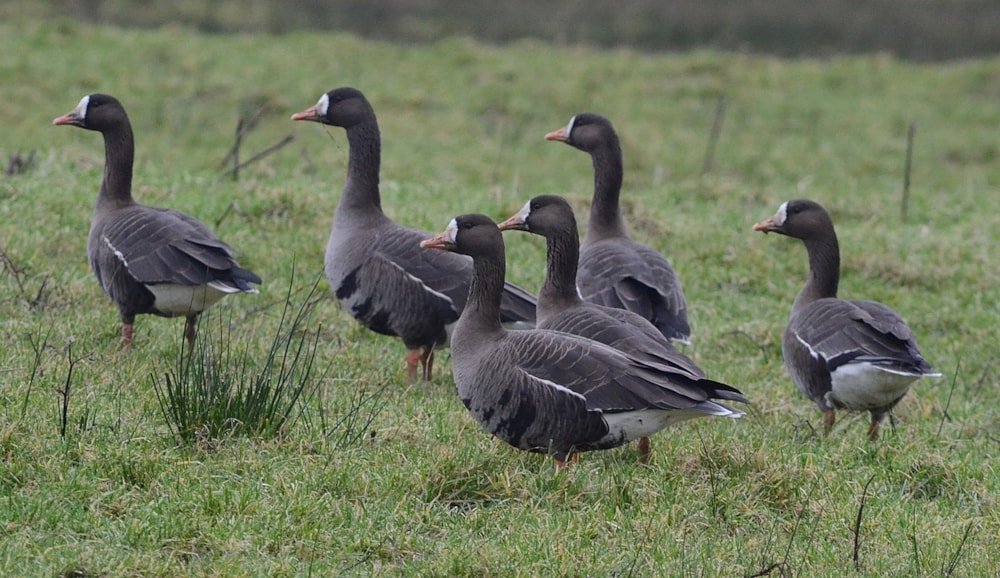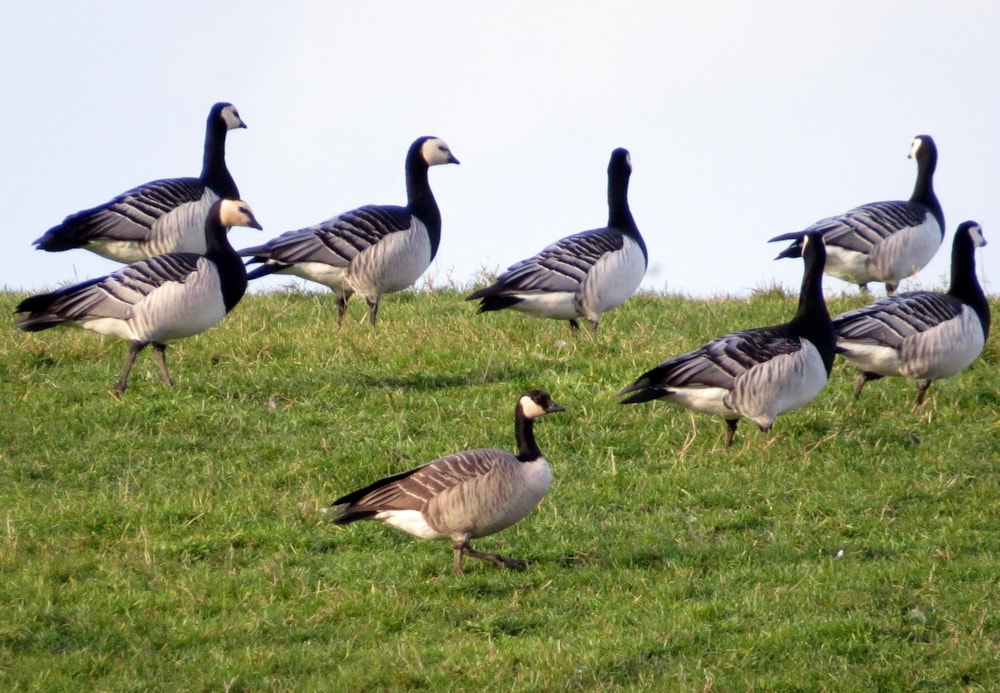New scientific studies have concluded that the shooting of thousands of Barnacle Geese in Scotland is founded on poor science. The killing spree on Islay leaves many of the geese to suffer a slow death, as well as contaminating the environment. As a result, the mass culling has been deemed unnecessary, unsustainable and a waste of money by independent ornithological experts, who have called for the shooting to cease.

Approximately 60 per cent of the world's population of Barnacle Geese winter on Islay (Derek Forshaw).
Every winter Islay hosts up to 50,000 Barnacle Geese – roughly 60 per cent of the global population – which arrive from Greenland to feed on grasses grown for livestock consumption. They are joined by around a quarter of the world's threatened Greenland White-fronted Geese. Such densities of both species on the island render the populations as internationally important, but despite this Scottish Natural Heritage (SNH) arrange an annual shooting and in 2015 laid out a scheme to increase the number of birds killed.
Farmers receive almost £1,000,000 per year to compensate for the damage caused by the geese, but they claim that increasing numbers mean the birds must be culled, and that the hundreds of thousands of pounds provided annually to recompense them must also continue. SNH and farmers argue that both the mass slaughter and compensation is required to avoid agricultural damage and to protect businesses.
Under the 2015 scheme agreed by SNH increasing numbers of Barnacle Geese are being shot; during the last three years more than 8,200 have been killed, including 3,321 alone last winter. Goose experts Dr Steve Percival and Dr Eric Bignal have explained that the scheme is fundamentally flawed and said: "The current scheme is not sustainable, cannot be demonstrated to deliver the best value for money, is raising animal welfare issues and is creating a long-term lead-poisoning risk to birds, other wild animals and livestock."
The killing is sometimes done with a single-pump shotgun, and hundreds of birds are wounded rather than being killed outright, leaving them to die a slow and painful death. SNH admitted that this could happen to 10 per cent of birds shot, but the true proportion is likely to be higher, with Percvial and Bignal highlighting evidence to suggest this. The pair were critical of the frequent use of lead shot, which could pollute the water and soil, leaving other wildlife at risk.

Greenland White-fronted Geese are threatened, and Islay is recognised as a globally important wintering site (Joe Graham).
The experts also explained that the complexity of goose movements to and from Islay and within the island was poorly understood and that disturbance caused by the mass shooting could be simply moving the problem elsewhere. The culling style of firing at fleeing flocks also endangers the wintering Greenland White-fronted Geese and even vagrant species; both Richardson's Cackling Goose and the threatened Red-breasted Goose have been recorded in Barnacle flocks on Islay during the past five years. Other birds that use the grassland such as European Golden Plover, Northern Lapwing and Eurasian Curlew could also be affected.
Percival, an ornithological consultant who has been studying Barnacle Geese on Islay for 34 years, added: "We do not suggest that a radical change in management is needed but rather that the existing scheme should be reassessed and refined based on a better scientific understanding of the geese and their impact, and specifically that the culling element of the scheme should be removed. The cull target is based on poor science that does not consider real-life goose behaviour."
SNH has been involved with previous controversies regarding the use of public money to fund unpopular culls, including Ravens in Perthshire and Hedgehogs in Uist. As a result of the Islay cull, both the RSPB and Wildfowl and Wetlands Trust (WWT) have pulled out of the Scottish government's National Goose Management Review Group, and have lodged a formal complaint with the European Commission.
Paul Walton, from RSPB Scotland, has urged SNH to reconsider the cull and said: "It is not properly evidence based and shifts the issue onto crofters and farmers on other islands. It sets a dangerous precedent for regulating populations of legally protected wildlife and it is probably adding to pressures on the globally threatened Greenland White-Fronted Goose. Moreover, we believe that an effective alternative approach is available."

No comments:
Post a Comment